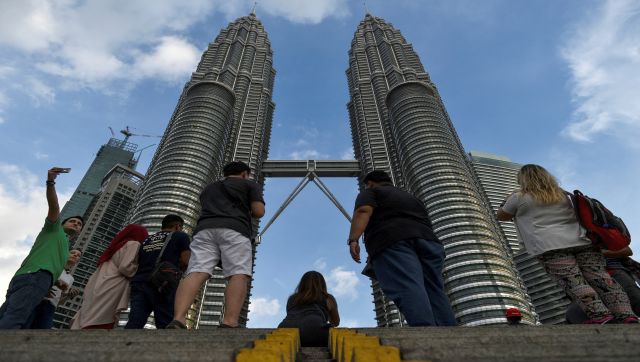Want to travel for the upcoming Christmas-New Year holidays? Malaysia would serve well as your next holiday destination after the country’s Prime Minister Anwar Ibrahim announced on Sunday that it would be scrapping entry visa requirements for citizens of India beginning 1 December. On Sunday,
Malaysia ’s PM Ibrahim said, “Starting 1 December, we will give additional facilities of 30 days of visa exemption to citizens of India and China to come to Malaysia.” The aim is to boost tourism and, in turn, push the economy upwards. And the move comes after Anwar had last month announced plans to improve visa facilities next year to encourage the entry of tourists and investors, “especially from India and China.” But why is it that countries like Malaysia, and others are providing visa-free travel to Indians? What is the benefit of such a move? We explore the situation and give you the answers. Which countries are granting visa-free travel to Indians? Recently, several countries have announced visa waivers for Indians, opening doors for hassle-free journeys. A few weeks ago,
Thailand announced that Indian nationals could enter the Asian country without a visa, effective from 10 November. Valid until 10 May 2024, the country is allowing Indian tourists to stay in Thailand for 30 days for tourism purposes only. Similarly,
Sri Lanka announced a visa-free entry initiative for visitors from India. This was a part of a pilot project to rebuild the debt-trapped island nation’s tourism till 31 March 2024. Apart from Indian tourists, travellers from six other countries, including China, Russia, Malaysia, Japan, Indonesia and Thailand, will also be able to visit Sri Lanka, without a fee. [caption id=“attachment_13434662” align=“alignnone” width=“640”] Tourists visit the Big Buddha statue in Phuket, Thailand. Earlier, Thailand also announced visa-free travel to Indians, starting 10 November. File image/Reuters[/caption] Reports state that Vietnam is also considering granting short-term visa waivers to Indians in order to boost tourism. According to the Vietnamese news agency VnExpress, Nguyen Van Hung, Vietnam’s minister of culture, sports, and tourism, has called for waivers for major markets such as China and India to help drive tourism recovery. This was announced on 22 November at a conference presided over by Prime Minister Pham Minh Chinh. Malaysia, too, on Sunday announced the waiver of visas to Indians in a bid to encourage tourism in the country. In fact, according to a July report, Indians could travel to 57 destinations without needing a visa. Besides countries granting visa waivers, some have made the visa process easier. For instance, Australia has made “significant efforts” to simplify, speed up and streamline the visa application process for Indian travellers.
Russia , too, has started issuing electronic visas (e-visas) to Indian passport holders. As per reports, the move was aimed at helping visitors get travel approval faster for diverse purposes including tourism, business trips and guest visits. What’s the reason behind such a move? There are a number of factors why countries like Malaysia, Thailand, Sri Lanka and others are considering or granting visa-free travel to Indians. Let us first consider Malaysia. A visa-free entry makes travel easier, luring an increasing number of tourists to the country, and boosting its economy. By waiving visa requirements, Malaysia hopes to woo more Indian tourists to the nation. According to government data, China and India are Malaysia’s fourth and fifth-largest source markets respectively. Government data reveals that Malaysia recorded 9.16 million tourist arrivals between January and June this year, with 4,98,540 from China and 2,83,885 from India. That compared to 1.5 million arrivals from China and 3,54,486 from India in the same period of 2019, prior to the pandemic. The Malaysian administration hopes that with more Indians coming into the country, spending will increase and its economy will get a much-deserved boost. [caption id=“attachment_13434672” align=“alignnone” width=“640”]
Malaysia recorded 9.16 million tourist arrivals between January and June this year, with 4,98,540 from China and 2,83,885 from India. File image/AFP[/caption] And this trend isn’t restricted to Malaysia alone. Countries the world over are seeing the value of Indian tourists. In 2022, over 20 million Indians travelled abroad with tourism being the third biggest reason for doing so. And in the first four months of 2023, nearly 8.5 million have travelled abroad, already touching two-fifths of the full-year figure of 2022. Moreover, a report titled ‘How India Travels’ released by Booking.com and McKinsey & Company, projected that Indian travellers’ total expenditure will surge to $410 billion, positioning India as the fourth largest global spender. This is a substantial 173 per cent increase from 2019, when Indian travellers collectively spent $150 billion, ranking India as the sixth largest global spender. The report further added that the number of trips by Indian travellers is predicted to jump from 2.3 billion in 2019 to an astounding five billion in 2030. As Santosh Kumar, country manager for India, Sri Lanka, Maldives, and Indonesia at Booking.com told CNBCTV18 that Indian travellers’ willingness to explore, make a unique opportunity for India’s travel industry to provide attractive, personalised, and sustainable experiences. [caption id=“attachment_13434692” align=“alignnone” width=“640”]
 In 2022, over 20 million Indians travelled abroad with tourism being the third biggest reason for doing so. And in the first four months of 2023, nearly 8.5 million have travelled abroad. File image/AFP[/caption] Arshdeep Anand, director of Holiday Moods Adventures added to Free Press Journal that “Indians are big spenders and destinations have come to realise this.” Rajeev Kale, president and country head for holidays, MICE and visa at Thomas Cook, also was quoted as telling The Economic Times, “Indians are travelling like never before,” adding that the company has seen a 200 per cent surge in demand for the January-June period this year versus the year earlier. There’s also another reason why countries are granting visa-free travel to Indians. Currently, Indians have to endure a long wait for Schengen and
US visas . Realising this, the countries are luring the potential travellers to their countries.
**Also read: Why Indonesia's Bali is banning tourists from renting motorbikes** Why are Indians travelling so much? But what’s driving Indians to be such travellers? Many experts state that this trend is primarily driven by wanderlust. [caption id=“attachment_13434752” align=“alignnone” width=“640”]
In 2022, over 20 million Indians travelled abroad with tourism being the third biggest reason for doing so. And in the first four months of 2023, nearly 8.5 million have travelled abroad. File image/AFP[/caption] Arshdeep Anand, director of Holiday Moods Adventures added to Free Press Journal that “Indians are big spenders and destinations have come to realise this.” Rajeev Kale, president and country head for holidays, MICE and visa at Thomas Cook, also was quoted as telling The Economic Times, “Indians are travelling like never before,” adding that the company has seen a 200 per cent surge in demand for the January-June period this year versus the year earlier. There’s also another reason why countries are granting visa-free travel to Indians. Currently, Indians have to endure a long wait for Schengen and
US visas . Realising this, the countries are luring the potential travellers to their countries.
**Also read: Why Indonesia's Bali is banning tourists from renting motorbikes** Why are Indians travelling so much? But what’s driving Indians to be such travellers? Many experts state that this trend is primarily driven by wanderlust. [caption id=“attachment_13434752” align=“alignnone” width=“640”] Wanderlust and a strong economy are the driving factors as to why Indian tourism overseas is seeing a spike. File image/AFP[/caption] A strong economy – India is the fifth largest economy in the world, behind the US, China, Germany and Japan – is also fuelling Indians’ desire to travel. Omri Morgenshtern, CEO of travel and bookings website Agoda, suggests that this rise in travel can be attributed, to some extent, to the geographical distance between countries and India. Moreover, low-cost carriers are enabling a larger number of Indians to book foreign holidays. However, one news report offered a different perspective on Indians’ desire to travel. A leisure report by Booking.com showed that social status, and not any other interest like discovering a new locale, is the over-riding factor that drives a vast majority of Indians to travel. With inputs from agencies
Malaysia has followed in the footsteps of Thailand and Sri Lanka by allowing visa-free travel to Indians. The move comes as several countries see the value in a desi tourist – who is travelling much more and willing to spend much more
Advertisement
End of Article


)

)
)
)
)
)
)
)
)



